Cultural Heritage | 'Beginning Sound'
Ancient Jaw Harp Promotes Musical Charm over Millennia

Kouxian, or ancient jaw harp, is the earliest string instrument that has been found in China. By placing kouxian between the lips and tapping it with the fingers, the instrument can produce sounds, such as singing birds or a spring flowing through mountains. Dating back 4,000 years, kouxian is regarded by many as a "living fossil," which has promoted the musical charm produced by this unique string instrument.
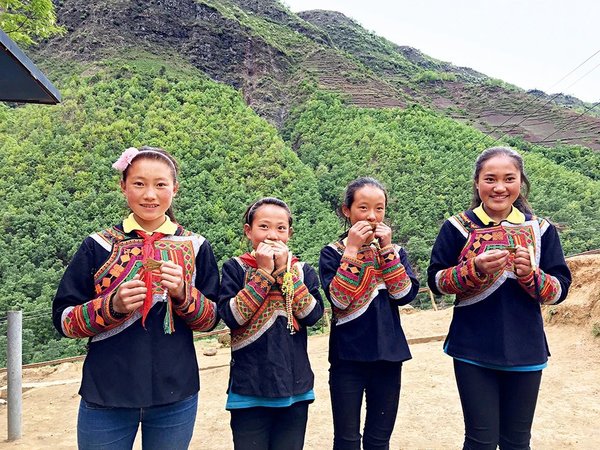 |
| Ethnic Yi girls play kouxian. |
Ancient Folk Instrument
According to a report published by Xinhua in May 2018, a collection of ancient jaw harps were unearthed at the Shimao ruins, a prehistoric site in Shenmu, a city in northwest China's Shaanxi Province. The jaw harps, or "kouxian" in Chinese (literally meaning "string in mouth"), were discovered at the site, which dates back 4,000 years. Each instrument, made from bone, is 8-9 centimeters long, and 1 centimeter wide.
The unearthing of the jaw harps at the Shimao ruins was a significant discovery in the history of music — for China, and for the world. Based on documents, paintings and musical records, experts have come to agree the jaw harps were transported to and promoted in eastern Europe near the end of 13th century. The kouxian unearthed at the Shimao ruins can be considered an "ancestor" of the modern string instruments played by mouth.
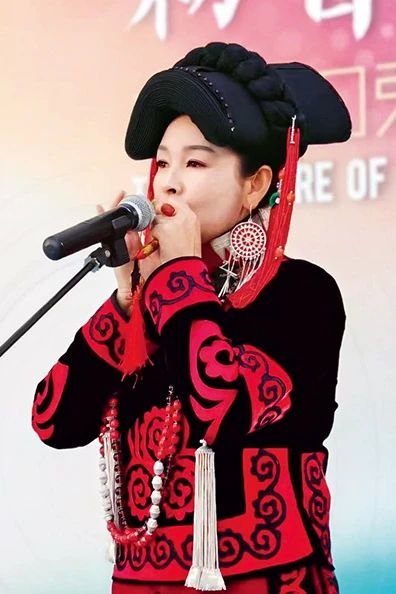 |
| Ma Guoguo, inheritor of the kouxian music played by ethnic Yi people |

Kouxian remains popular with various ethnic groups in China. The kouxian music still played by ethnic Yi people, in Butuo, a county in Liangshan Yi Autonomous Prefecture, in southwest China's Sichuan Province, was added to the list of China's national intangible cultural heritage in 2008. Butuo is known as "the hometown of Yi people's kouxian music," because the delicately made folk instrument has been inherited by local residents throughout the generations. Even today, Yi people in Butuo like to carry bamboo-made kouxian with them, so they can play the instrument whenever they want to entertain themselves.
The kouxian music played by ethnic Qiang people, in Beichuan Qiang Autonomous County, in Mianyang, a city also in Sichuan, was added to the list of China's national intangible cultural heritage in 2011. Kouxian is a gift a young Qiang man normally gives his girlfriend when they are dating. Over time, an increasing number of Qiang women have come to play kouxian well.
Qiang people either play kouxian solo, or as an ensemble. While most of the melodies performed by kouxian are love songs, some tunes express praise for heroes and/or heroines. During traditional festivals, professional kouxian players are invited to Qiang communities to perform — as part of the celebration.
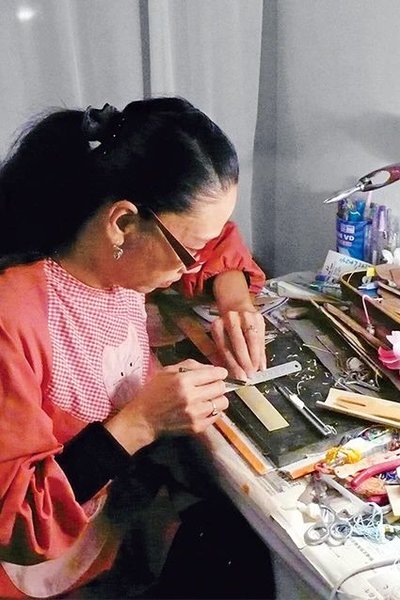 |
| An Yuge, inheritor of the kouxian music played by ethnic Hui people |

Inheriting Musical Charm
Ma Guoguo, an ethnic Yi woman, works in southwest China's Yunnan Province. When Ma was young, she watched her grandmother play kouxian. Little Ma was curious as to how the tiny instrument could produce such lively melodies. Ma began learning how to play kouxian from her grandmother when she was in primary school. She also listened to music programs on the radio, so she could improve her performing skills.
Unlike the traditional kouxian performing style, Ma usually hits the jaw harp faster, which results in a louder reverberation of sounds produced by mouth. In 2022, Ma received a master award, during an international jaw harp competition in Russia. Ma hopes more people will develop an interest in and obtain a better understanding of the kouxian performing art of the ethnic Yi people. Ma currently teaches kouxian in Yunnan. She also offers online courses to teach foreigners how to play kouxian.
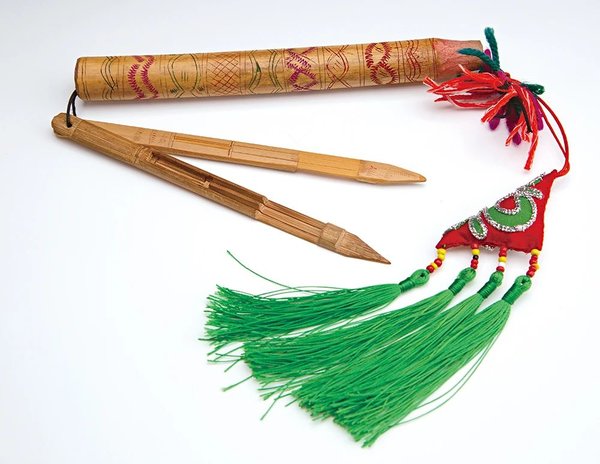

An Yuge is a national-level inheritor of the music played by ethnic Hui instruments (including kouxian), which was added to the list of China's national intangible cultural heritage in 2006. Kouxian is one of the instruments An makes and plays.
An says her mother first saw kouxian in northwest China's Ningxia Hui Autonomous Region in the 1950s. Nowadays, women still use the instrument to produce sounds that imitate bees buzzing, birds singing, water running, and other commonly heard sounds in nature. An's son, Li Xu, has learned how to make and play kouxian from both his mother and grandmother. He operates a website, on which he posts videos that document the manufacturing and performing of kouxian. He says he wants to arouse young people's enthusiasm for kouxian.
Exhibitions Promoting Kouxian Culture
 |
| Miao Yan, curator of the themed exhibitions "The Beginning Sound" |
The Chinese National Museum of Ethnology (CNME) has organized several exhibitions, under the theme of "The Beginning Sound," in recent years, to highlight the culture of jaw harps worldwide. CNME has collaborated with museums, including the China National Museum of Women and Children (in Beijing), Hubei Provincial Museum (in central China's Hubei Province), and Wuxi Museum (in east China's Jiangsu Province), to organize the exhibitions.
Miao Yan, curator of the exhibitions, says the exhibitions have helped introduce the culture of kouxian to the world. "In addition to showing the ethnology, folklore and musicology related to jaw harps, the exhibitions have been exploring the artistry and social functions affiliated with this instrument," Miao says.
Kouxian has become an instrument widely performed by people from around the world. An increasing number of young people are using this instrument, which has a history over millennia, to play pop music.
Photos from Chinese National Museum of Ethnology
(Women of China English Monthly March 2025)
Editor: Wang Shasha
Please understand that womenofchina.cn,a non-profit, information-communication website, cannot reach every writer before using articles and images. For copyright issues, please contact us by emailing: website@womenofchina.cn. The articles published and opinions expressed on this website represent the opinions of writers and are not necessarily shared by womenofchina.cn.

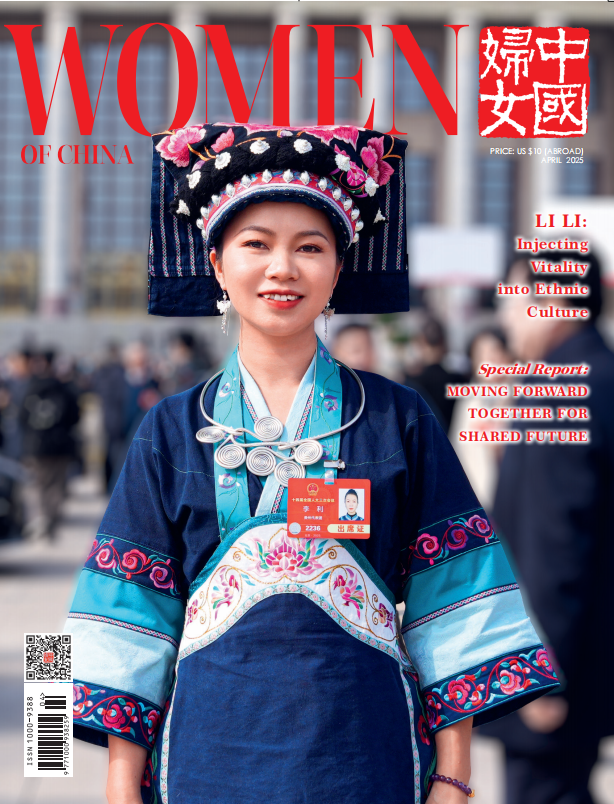






.jpg)

 WeChat
WeChat Weibo
Weibo 京公网安备 11010102004314号
京公网安备 11010102004314号